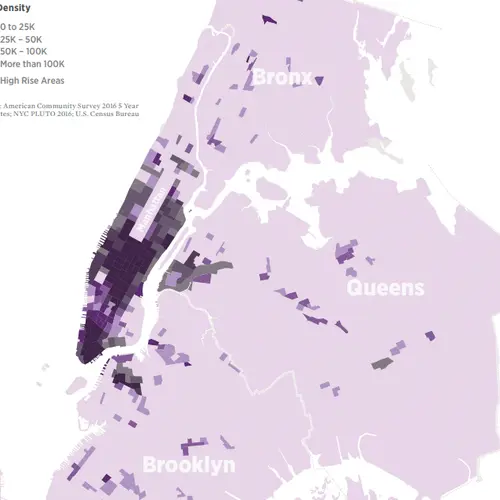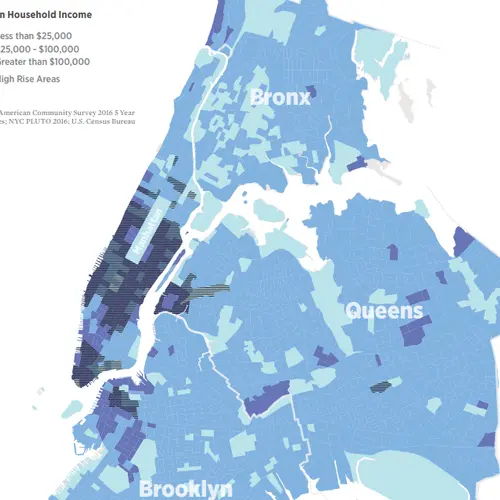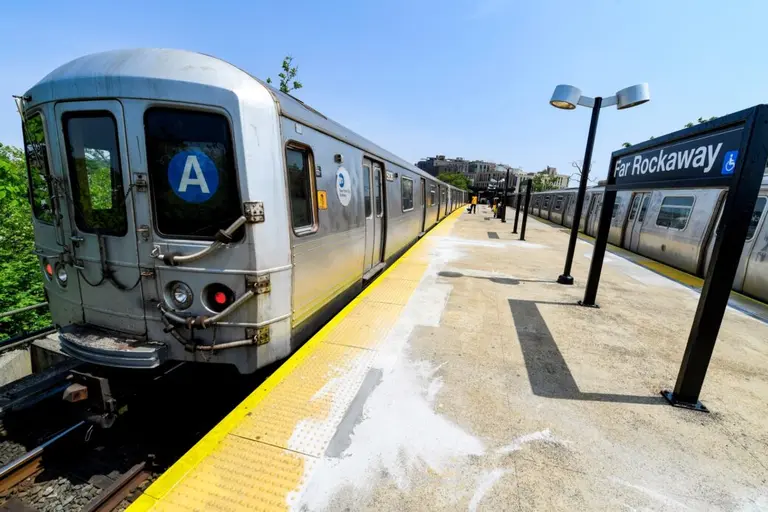RPA report calls for more affordable housing in wealthy, job-rich NYC neighborhoods
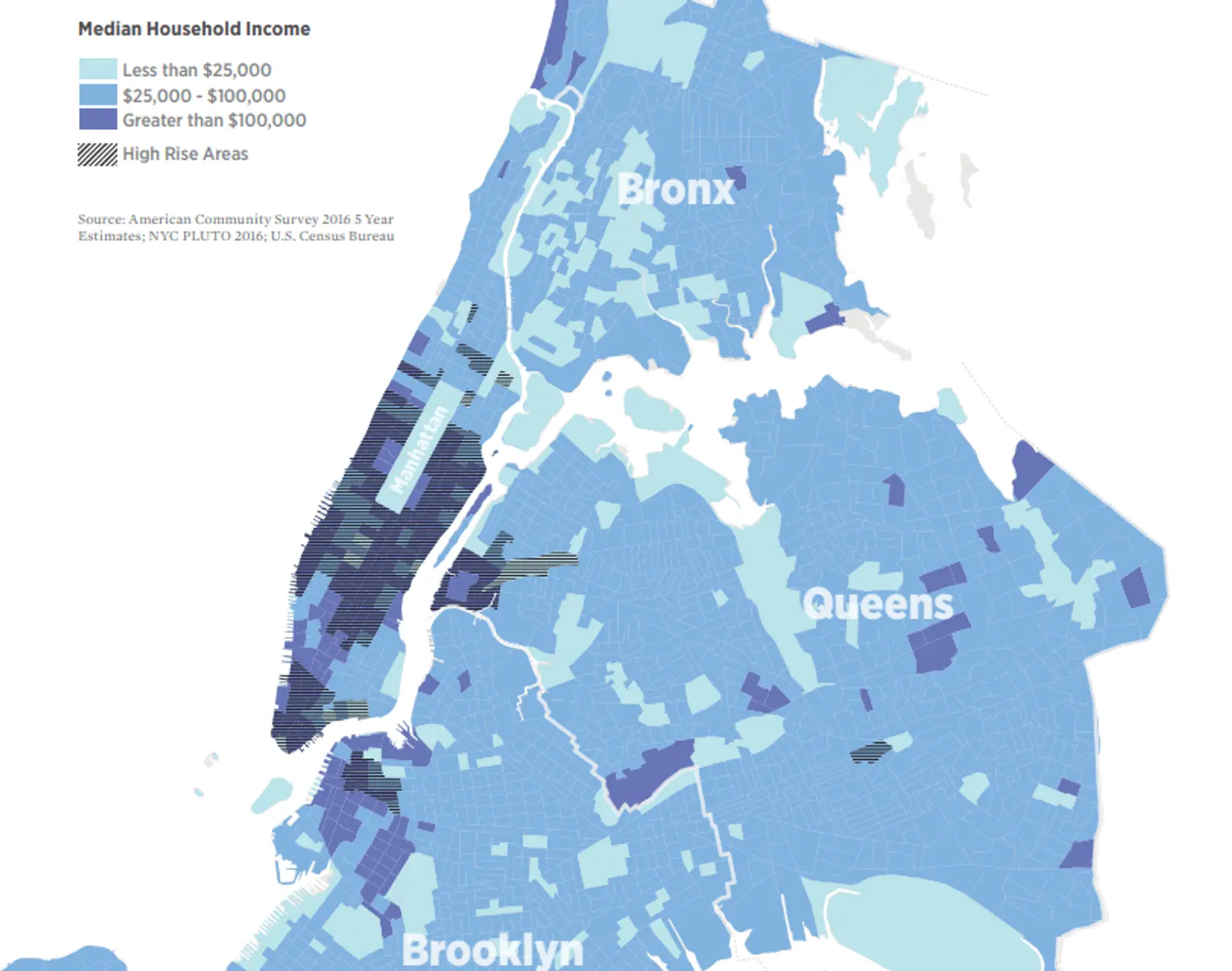
Map courtesy of RPA
To solve New York City’s housing and homelessness crisis, more affordable housing should be built in high-rise neighborhoods which have the infrastructure and amenities to support it, the Regional Plan Association (RPA) said in a report released Monday. In order to build more developments in areas of all incomes, RPA says a 67-year-old state law that prohibits residential buildings larger than 12 times their lot size needs to be repealed. Passed by the state in 1961, the law caps residential floor area ratio (FAR) at 12.0. The report calls for lifting the cap to give communities more of a voice in the creation of mixed-income housing, as well as allow for expensive neighborhoods to diversify and expand affordability.
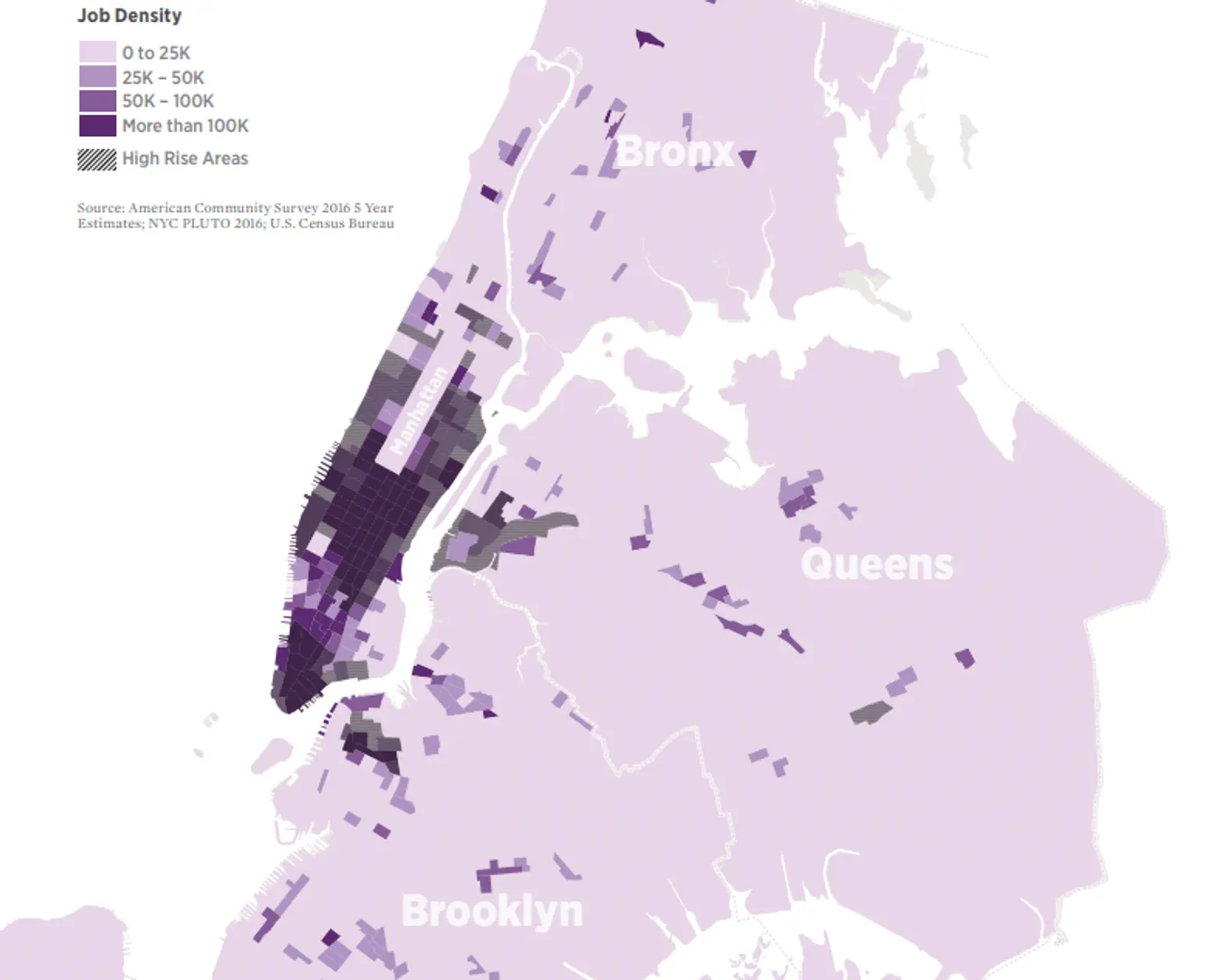
The report says repealing the law will allow for more affordable housing in high-rise areas like Midtown, Tribeca, Downtown Brooklyn and Long Island City. RPA looked at land in NYC where it’s not possible to add enough residential density to trigger mandatory inclusionary housing, not including landmarks and historic district, and found 149 census tracts that have the infrastructure for more affordable housing.
These tracts contain 51 percent of all the jobs in the city and they are within half-mile of 36 percent of the subway stops. Plus, 98 percent of them are rated as “Walker’s Paradise” by Walkscore, which highlights the area’s access to amenities and stores.
“This cap is blocking the way to better urban design, more needed homes, and more mixed-income neighborhoods,” Moses Gates, the Director of Community Planning and Design for RPA, said in a press release.
Because of the cap, the report argues, 149 tracts which offer some of the greatest opportunities for all New Yorkers, especially low- and middle-income residents, currently cannot be rezoned for additional residential density. Mayor Bill de Blasio has backed lifting the cap, which could give his plan to create or preserve 300,000 units of affordable housing by 2024 a boost.
In addition to repealing the 12.0 limit on residential FAR, the association recommends that City Planning conduct a zoning audit to study any unintended consequences and work with architecture professionals and community stakeholders on design guidelines. Plus, they want the city to protect commercial and community facility uses when needed.
Read the full report from the RPA here.
RELATED:
